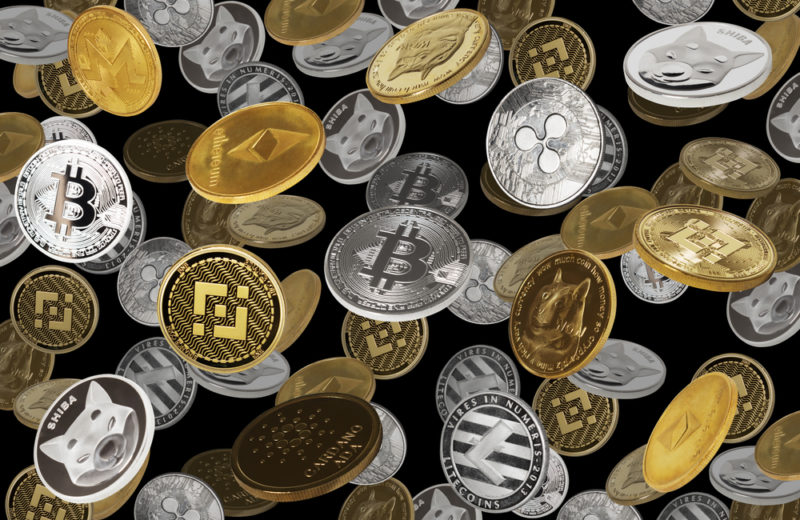Non-fungible tokens, commonly known as NFTs, have emerged as a revolutionary digital asset representing ownership of unique items or content. Unlike traditional cryptocurrencies, which are fungible, meaning each unit is identical and interchangeable, NFTs are one-of-a-kind. This unique characteristic means they cannot be exchanged one-to-one like Bitcoin or Ethereum. Instead, using blockchain technology, NFTs certify the ownership and originality of digital assets, ranging from artworks and music to virtual real estate and beyond.
Underlying Technology: Blockchain
The backbone of NFTs is blockchain technology. This decentralised ledger records transactions and ensures the authenticity and security of each token. By leveraging this technology, NFTs provide verifiable proof of ownership and provenance of digital items. Every transaction or transfer of ownership is recorded on the blockchain, making it virtually impossible to alter or counterfeit the digital asset. This not only fortifies the security of digital assets but also enhances trust among buyers and sellers in the NFT market.
NFTs as Collectibles
NFTs have paved the way for a new era of digital collectibles. These include highly sought-after digital artworks, segments of virtual real estate, and limited edition virtual goods, often referred to as “Ceiling NFTs,” which have a cap on the quantity available. The scarcity and uniqueness of these NFTs drive their appeal and value. Collectors and investors are drawn to NFTs because they offer something rare and represent a personal or emotional connection to the creator or the content.
Rarity: The Value Proposition
In the realm of NFTs, rarity is a crucial value driver. Unlike physical collectibles, the scarcity of digital items is not limited by physical constraints but by the design and specification set forth by creators. This artificial scarcity, such as limited edition releases or unique attributes, adds significant value to NFTs. The rarity of an NFT significantly enhances its desirability and potential market value, making it highly attractive for collectors and speculators.

Market Insights and Growth Trajectory
The expanding utility of NFTs beyond digital art into areas like virtual real estate, gaming, sports memorabilia, and even ticketing demonstrates the potential for further diversification. This trend will likely continue as more industries and businesses explore NFT-based applications, fostering a wider market and attracting a broader range of participants.
The Exponential Growth of NFTs
The NFT market has experienced explosive growth since its more niche beginnings in 2012, with a particular boom observed in 2021. This growth trajectory suggests a robust future, with potential for even broader adoption over the next decade. As the use cases of NFTs expand, encompassing more industries and applications, the market is expected to widen, attracting a diverse range of participants.
Trading Volume and Market Dynamics
A key indicator of the NFT market’s vitality is its trading volume, which reflects solid demand. However, investors should be cautious, as some projects may engage in practices that artificially inflate trading volumes to attract unwary buyers. Discerning the genuine demand from manipulated metrics is crucial for making informed investment decisions.
Profit Opportunities and Support for Creators
The profitability of NFTs has been prominently displayed by influencers and public figures, who have garnered substantial returns. Market sentiments often drive price uptrends, creating lucrative opportunities for timely investors. Moreover, NFTs offer a mechanism to protect creators’ digital content, helping minimise copyright infringement and providing artists with a new platform to monetise their work. Notable figures in the music industry, like Tory Lanez, Don Diablo, and Kings of Leon, have embraced NFTs to release their music albums, thus pioneering new revenue models.
Investment Considerations in the NFT Space

Investing in the NFT (Non-Fungible Token) market requires careful evaluation of various factors to mitigate risks and identify projects with the highest growth potential. Here are some key considerations for investors to keep in mind:
Critical Metrics: Market Capitalisation and Team Reputation
Before investing, understanding the market capitalisation of NFT projects is vital as it indicates the level of interest and the financial health of the market. A high market cap often reflects a robust community and a higher likelihood of sustainability. Additionally, the reputation and transparency of the team behind an NFT project are essential to mitigate the risks of scams.
NFT Utility and Community Engagement
The real-world utility of an NFT enhances its value and appeal, contributing to its longevity in the market. Integration with sectors like gaming and decentralised finance (DeFi) has shown promising developments. Furthermore, a project’s value is often mirrored by its community. Projects with many unique holders typically demonstrate a stronger, more supportive community base, which is crucial for long-term success.
Global Events and NFT Adoption
An intriguing development in adopting NFTs is their use by national institutions, such as the post offices in Austria and the Netherlands, which have issued art-themed postage stamps as NFTs. This legitimises the use of NFTs in traditional sectors. Additionally, it reveals new possibilities for their application, showcasing the versatility and expansion of this digital asset class.
NFT Trading Strategies: A Comprehensive Guide

The digital asset market has seen unprecedented growth over the past few years, with Non-Fungible Tokens (NFTs) emerging as a particularly vibrant component. Trading NFTs can be lucrative but also fraught with challenges.
There are various NFT trading strategies, dissecting their benefits, risks, and key considerations to help investors make informed decisions.
1. Short-term Flipping
Short-term flipping entails buying low-quality NFTs and quickly selling them to profit from price surges. This strategy demands constant market monitoring to identify undervalued NFTs ripe for a quick profit. The allure of short-term flipping lies in the potential for rapid gains, but it comes with substantial risk. The NFT market is volatile, with prices fluctuating rapidly, requiring careful analysis and swift decisions to avoid potential losses.
2. Long-term Investment
Contrary to the fast-paced nature of short-term flipping, long-term investment in NFTs involves holding onto assets with the belief they will appreciate significantly over time. Investors deploying this strategy focus on NFTs characterised by scarcity, utility, artistic quality, and community demand. Such factors suggest a potential for enduring success. Long-term investors need thorough research and patience to identify promising artists and endure fluctuating markets for future rewards.
3. Pre-sale Participation
Participating in NFT pre-sales allows investors to buy into projects at an early stage, often at a lower price before public release. This strategy can lead to significant gains if the NFTs increase value post-launch. However, it carries risks such as no guaranteed appreciation and the potential unpopularity of the NFTs. Investors must carefully assess the project’s fundamentals, team, and long-term vision to avoid investing in fleeting trends.
4. Yield Farming with NFTs
Yield farming is another intriguing strategy where investors can earn rewards by staking or providing liquidity using their NFTs on decentralised platforms. This method allows for earning passive income while maintaining ownership of the NFTs. Primary considerations involve evaluating platform risks and ensuring security measures to protect digital assets from breaches or failures.
5. Buy the Floor and Buy the Ceiling
This dual strategy involves buying NFTs at the lowest current market price (‘the floor’) or targeting high-value, rare items (‘the ceiling’). Buying the floor may provide profitability from general market uplifts, whereas buying the ceiling targets assets with the potential for substantial demand and valuation increases. However, both approaches have significant risks, especially if market conditions deteriorate, potentially leading to considerable losses. Investors should only commit funds they can afford to lose.
Advanced Trading Strategies: Whale Watching and Blue-Chip Investments

Observing the actions of prominent NFT investors, or ‘whale watching’, can provide insights into successful trading patterns and timing. Whales often have access to superior market data and may influence market movements, offering clues to strategic entry and exit points.
Investing in blue-chip NFTs—those belonging to collections with a proven track record and sustained demand—is another strategy for those seeking more secure investment avenues within the volatile NFT space. These established projects offer greater confidence in sustained interest and value appreciation.
Why Are NFT Investments High-Risk?
Investing in Non-Fungible Tokens (NFTs) necessitates a deep understanding of several complex factors, making it a high-risk venture. Success in this arena requires deep understanding. You need more than just basic knowledge of the crypto market. Expertise in blockchain technologies is essential. A thorough knowledge of project teams and their historical achievements is also crucial. Additionally, investors must skillfully analyse how the market responds to various NFT collections and predict potential price trends, including sudden increases and dramatic collapses. Understanding the intricate correlations among market factors adds complexity to NFT investments.
Conclusion
Trading NFTs requires strategic insight, market knowledge, and risk management. Traders choosing short-term flips for quick profits or long-term holds for greater rewards must navigate opportunities and pitfalls. To succeed in the dynamic NFT trading world, staying informed and adaptable is essential as the market evolves. By using discussed strategies and understanding risks, traders can optimally position themselves to maximise their NFT investments.
















